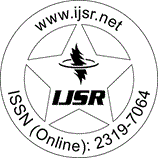Downloads: 2
India | Homeopathy | Volume 14 Issue 9, September 2025 | Pages: 1245 - 1246
Remedy Reaction in Homoeopathic Practice: A Critical Appraisal with Clinical Illustrations
Abstract: Background: In homoeopathy, remedy reaction is a critical determinant of therapeutic success. It refers to the observable changes in the patient?s state after administration of a homoeopathic medicine. Correct interpretation of remedy reactions helps distinguish curative progress from aggravation, suppression, or proving. Objective: To academically explore the concept of remedy reaction, its typology, prognostic significance, and clinical management, supported by illustrative case reports. Methods: A narrative review of classical homoeopathic literature (Hahnemann, Kent, Hering, Roberts, Vithoulkas) was undertaken to delineate theoretical foundations of remedy reaction. Additionally, selected clinical cases from homoeopathic practice were included to exemplify favourable and unfavourable remedy reactions. Results: Four case presentations demonstrated varied remedy reactions: (1) homoeopathic aggravation, (2) return of old symptoms, (3) excessive aggravation, and (4) appearance of new symptoms. These cases illustrate how remedy reaction guides potency selection, repetition strategy, and prescription accuracy. Conclusion: Remedy reaction is an indispensable tool in clinical decision-making and prognostication in homoeopathy. Systematic observation, documentation, and academic analysis of remedy reactions enhance both the art and science of homoeopathic prescribing.
Keywords: Remedy reaction, Homoeopathic aggravation, Vital force, Hering's law of cure, Case analysis, Materia medica, Prognosis in Homoeopathy
How to Cite?: Dr. Niralee Somaiya, Dr. Kajal Joshi, "Remedy Reaction in Homoeopathic Practice: A Critical Appraisal with Clinical Illustrations", Volume 14 Issue 9, September 2025, International Journal of Science and Research (IJSR), Pages: 1245-1246, https://www.ijsr.net/getabstract.php?paperid=SR25924164923, DOI: https://dx.doi.org/10.21275/SR25924164923
